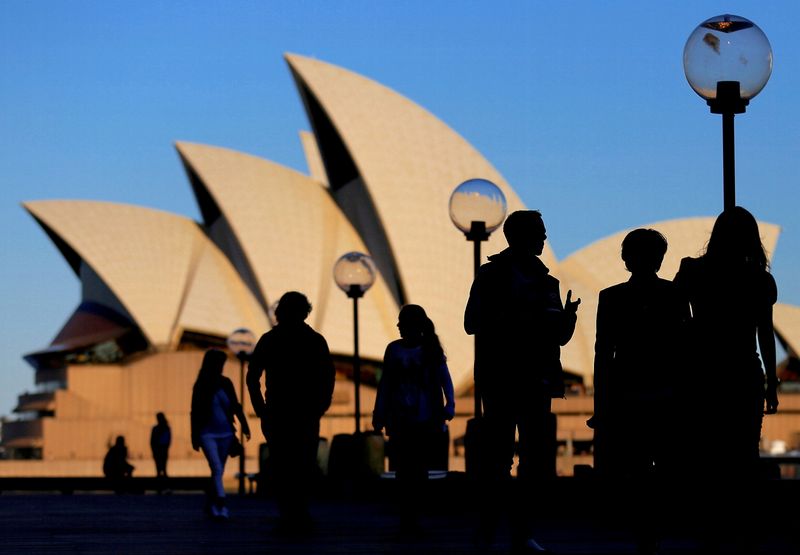By Wayne Cole
SYDNEY (Reuters) - Australia's economy slowed a little in the September quarter as sky-high prices and rising interest rates sapped consumer spending power, a sign aggressive policy tightening is working to cool demand.
Data from the Australian Bureau of Statistics on Wednesday showed real gross domestic product (GDP) rose 0.6% in the third quarter, compared with 0.9% the previous quarter and just under forecasts of 0.7%.
Annual growth still sped to a heady 5.9% - faster than China - though largely thanks to a one-off boom late last year as the economy re-opened from pandemic lockdowns.
Household consumption was again the engine of growth with a rise of 1.1% in the quarter, driven by spending on travel, eating out and new motor vehicles. However, that was down from a 2.1% jump in the second quarter and the lowest gain in a year.
There were also signs consumers were tightening their belts as the saving ratio dropped to 6.9%, from 8.3% the previous quarter, and peaks above 20% during the pandemic.
That suggests the Reserve Bank of Australia's (RBA) campaign to slow demand, and ultimately inflation, is working.
"The decent rise in Q3 GDP probably marks the last hurrah for Australia's economy as tighter monetary policy and falling real incomes weigh on spending," said Marcel Thieliant, a senior economist at Capital Economics.
The central bank on Tuesday raised its cash rate a quarter point to a 10-year high of 3.10%, bringing its total tightening since May to a thumping 300 basis points.
Markets are wagering it is not done yet with futures implying rates will peak around 3.6% in the middle of next year.
Graphic: Australian growth slows in Q3 Australian growth slows in Q3 https://www.reuters.com/graphics/AUSTRALIA-ECONOMY/GDP/lgpdkwdewvo/chart.png
Evidence of inflation pressure was widespread in the GDP report as its price index for domestic demand surged 1.8% in the quarter, the biggest increase since the introduction of a sales tax back in 2000.
Compensation of employees, one proxy for wages, boasted the biggest gain since 2006 as firms were forced to pay to attract and keep staff with unemployment at five-decade lows of 3.4%.

The country is still wading in cash thanks to sky-high prices for many of its resource exports. That helped nominal GDP grow a blistering 13.1% in the year to September to reach a record A$2.38 trillion ($1.59 trillion), or A$91,847 for every Australian.
($1 = 1.4941 Australian dollars)